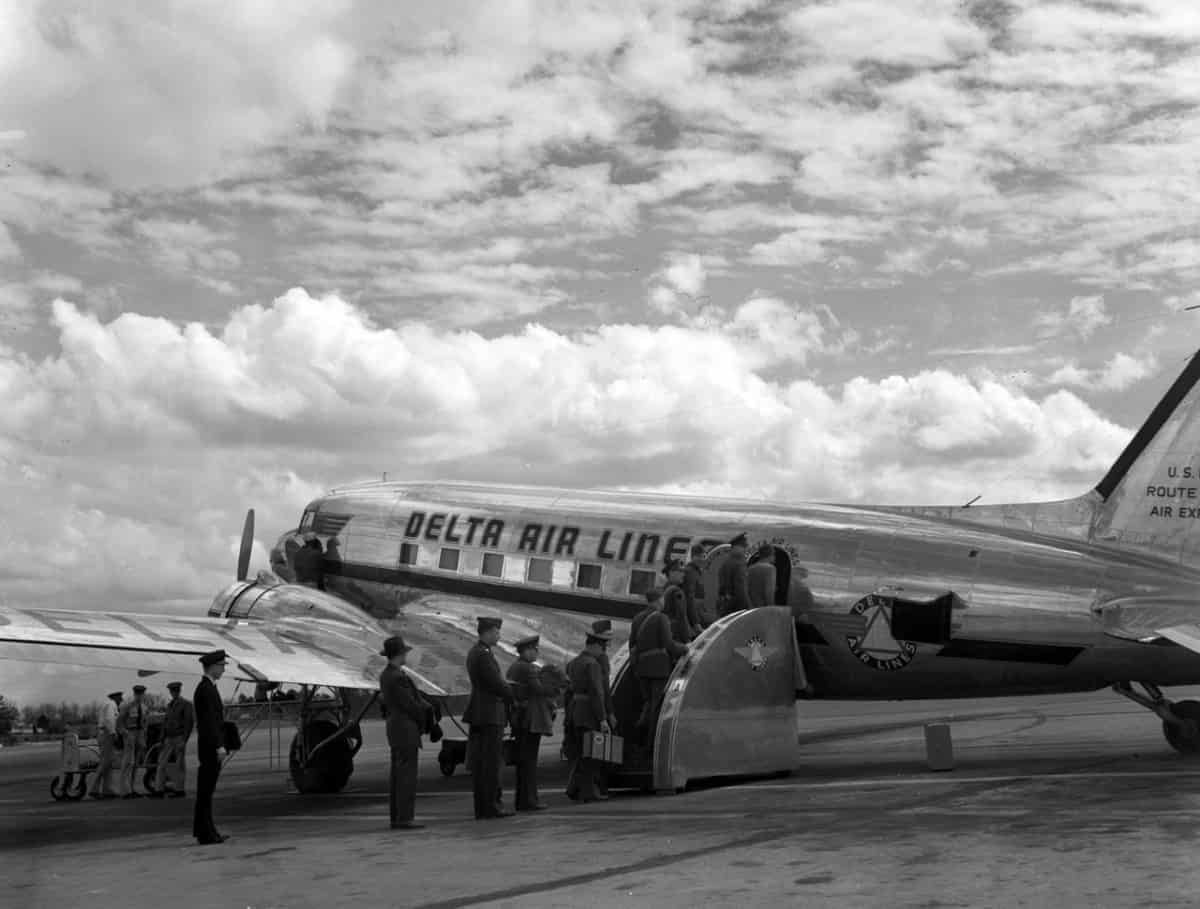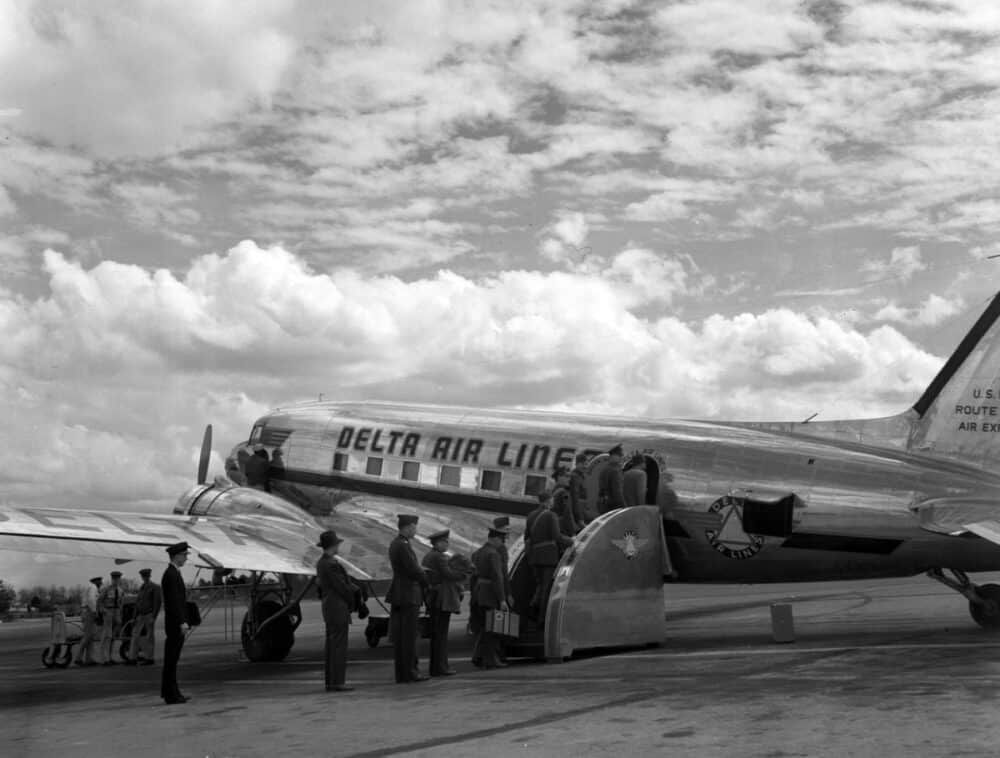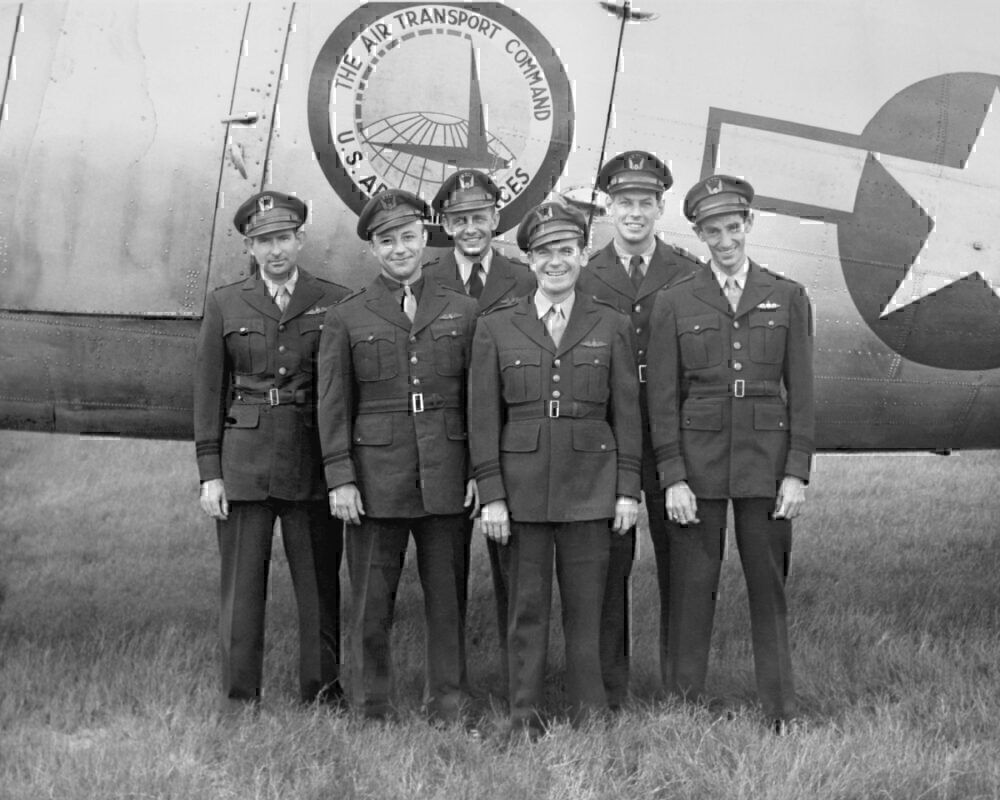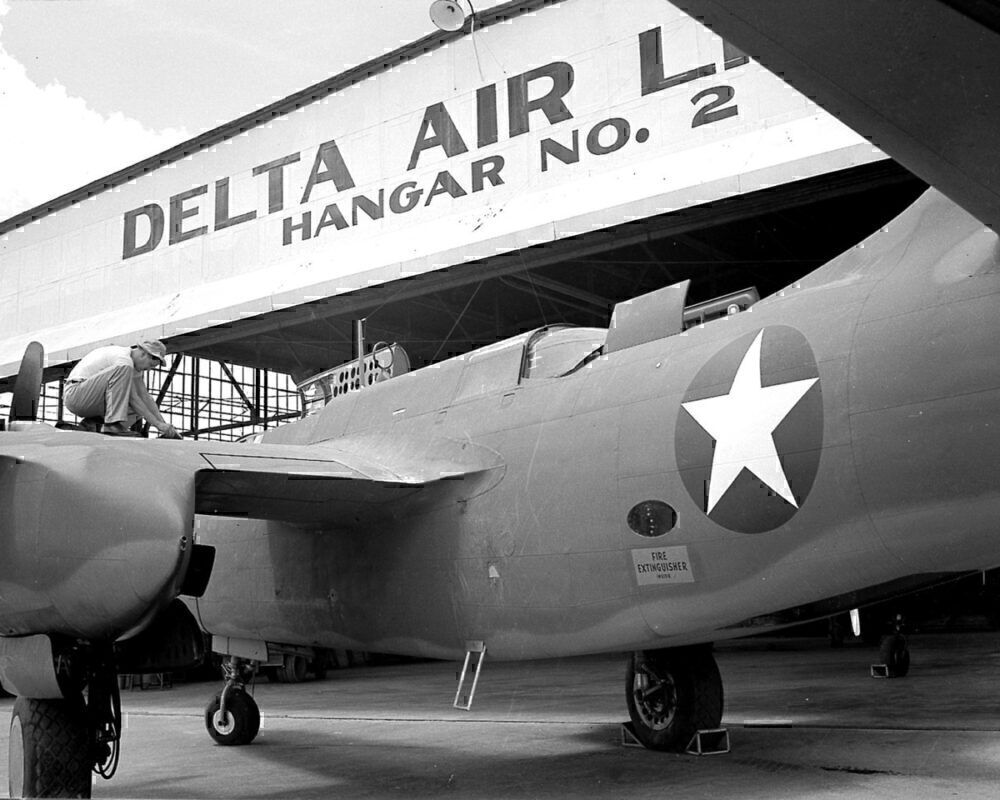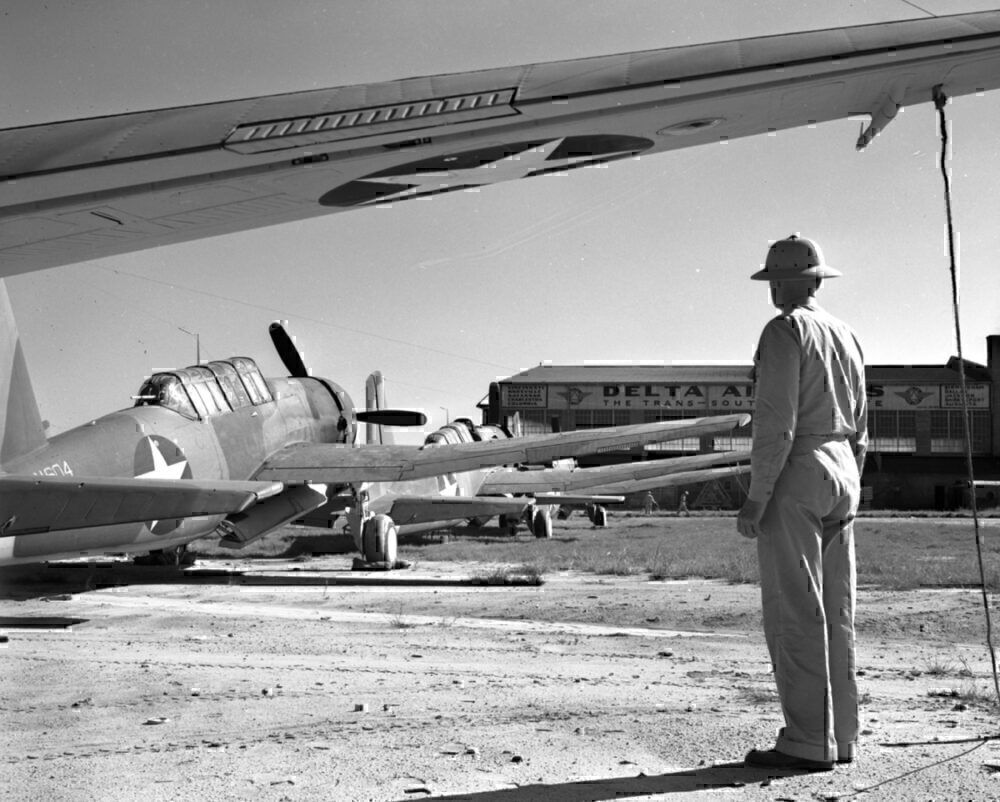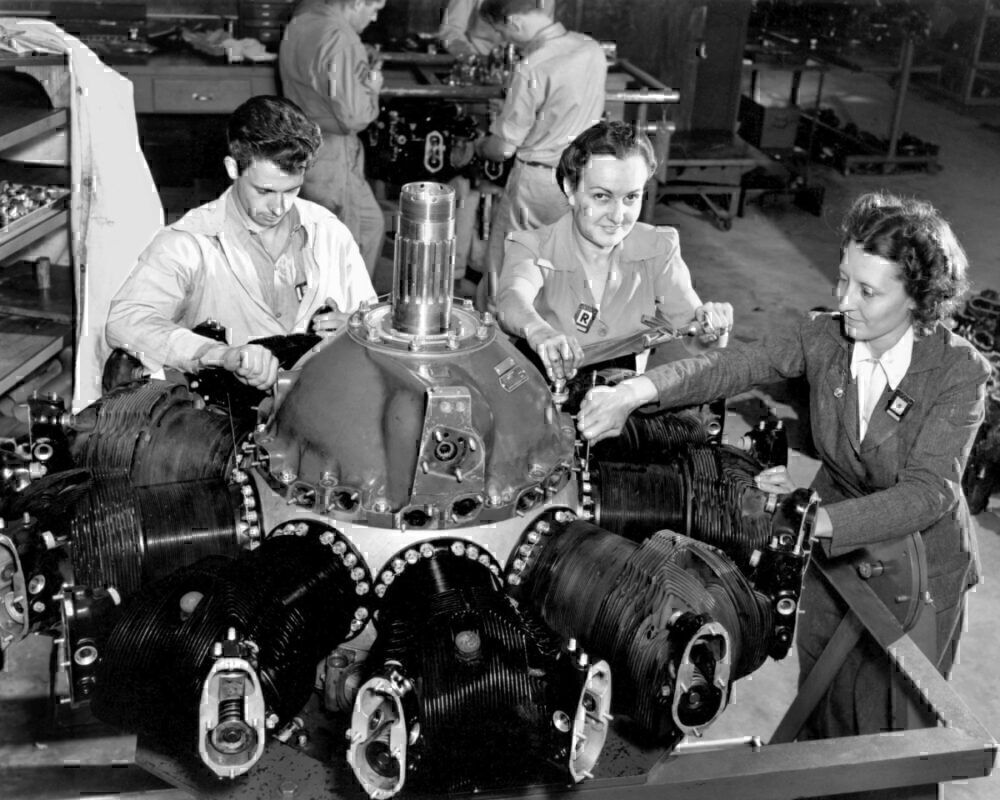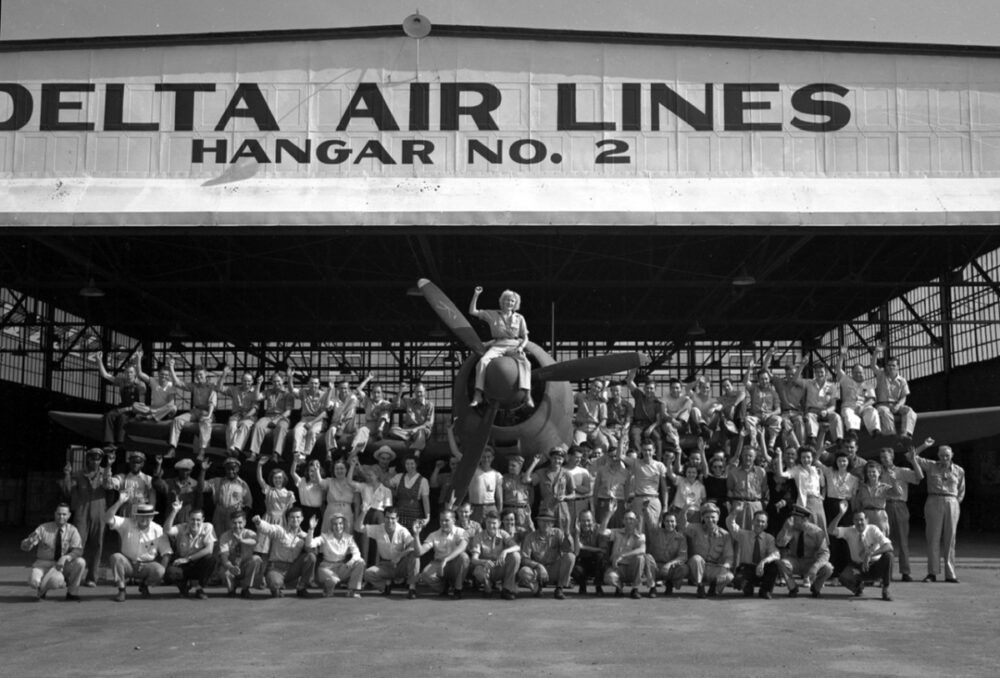By the time the United States entered the realm of World War II, Delta had already made waves across the southern states when it had come to commercial aviation. However, the war caused a storm within the industry across the country, forcing several carriers to change their approach.
A change in climate
When Pearl Harbor was attacked on December 7th, 1941, several commercial flights were ordered to land at the nearest airport. They were then asked to unload passengers and cargo, and await orders.
Operators placed most casual services on hold to work closely with the government. Altogether, the military requested 200 of the country's 360 planes. The government also took on the industry's personnel.
Moreover, air cargo increased by more than 100 percent in the industry. With this shift, Delta's pilots performed on military cargo routes for the Air Transport Command (ATC), which was formed in 1942. In total, the carrier logged over 2.5 million miles.
According to Delta, during this escalation in the war effort, it held 10 aircraft within its holdings. Five 10-seat Lockheed Electras and five 21-seat Douglas DC-3s made up the fleet.
The military requested all of the Electras and one of the DC-3s. The airline deployed the four remaining DC-3s on a reduced schedule—these flights primarily served military personnel or civilians flying on urgent war-related missions.
Stay informed: Sign up for our daily aviation news digest.
The business continues
Despite the challenges that it was facing, Delta would pull off some significant milestones during this period. In the early 1940s, it introduced flight attendants on its services to complement its new aircraft.
The following year, vice president and general manager C.E. Woolman would relocate the company to Atlanta, Georgia. This area would remain the airline's home until today. The businessman and his team members saw the city's rise as an economic hub as an essential factor in the firm's strategy going forward.
A helping hand
Regardless, Delta's contribution to the effort shouldn't be understated. One of the key factors that it helped out with was aircraft modification. Between May 1942 and November 1944, it modified 916 aircraft of 14 different types to meet the needs of the conflict.
Moreover, Delta's base was the last temporary modification center in the US to be closed by authorities. Former employees said that government officials sent the toughest jobs to the carrier's facility.
Additionally, the carrier's mechanics looked after planes that moved cargo between military bases. Along with this, it trained 225 army students in airline maintenance. Meanwhile, flight instructors trained 123 military pilots.
Adapting well
The company also started its long-term relationship with the American Red Cross during this time. The pair worked together to provide blood supplies for those in need. As the war further escalated, 187 Delta employees were in the armed forces.
Several of the carrier's flight attendants were also called to service due to their experience in nursing. Therefore, to fill up roles within the company, it no longer required that flight attendant applicants need to be nurses.
Across the country, women would soon fill positions that were usually taken on by men. This situation would cause a significant overhaul within several industries. Delta hired its first female mechanics in October 1942, By the middle of 1943, a third of the firm's employees were female, which is significantly higher than the figure of less than 10 percent before the conflict.
Altogether, the Second World War brought some challenging times for the aviation industry. However, Delta adapted to come back stronger after the conflict was over.
According to Delta's 1945 annual report stated the following:
"Despite problems arising under war conditions, Delta has been able to maintain good relations with the public, because employee relations have been healthy and all personnel have sought eagerly to advance the business of the company."
Several artifacts of this era can be seen at the Delta Flight Museum near Hartsfield-Jackson International Airport. Notably, Delta's 21-passenger 1940 Douglas DC-3 Ship 41 is on display here.
Pulling through
The post-war Delta employee handbook shared the following regarding the operations during WWII:
"The war years were a nightmare of long hours, reduced fleets, shortages of personnel, priorities, tripled and quadrupled traffic, plus additional contract work for the Army. But even during the war, the (federal) Civil Aeronautics Board was impressed by Delta's efficiency under the circumstances and authorized a new route from Fort Worth to New Orleans."
Ultimately, war often shapes the future of major companies. If it wasn't for World War I, Delta might have never come into existence. The first incarnation of Delta, Huff Daland Dusters, was born with the help of aircraft and pilots on loan from the army.
World War II saw the rise of several technologies such as the jet engine, radar, and cabin pressurization. Therefore, Delta matched these tools with the expertise that it gained to continue on its journey as one of the United States' major carriers in the decades that followed.
Woolman knew about the potential impact of the war at the time. In 1942 he said that there would be outstanding developments in the comparatively short history of aviation. However, he understood that there would be many progressions from the joint efforts across the industry and that the sector would advance at least a dozen years almost overnight.
What are your thoughts on how World War II impacted Delta Air Lines? How do you think the carrier handled the situation? Let us know what you think in the comment section.

